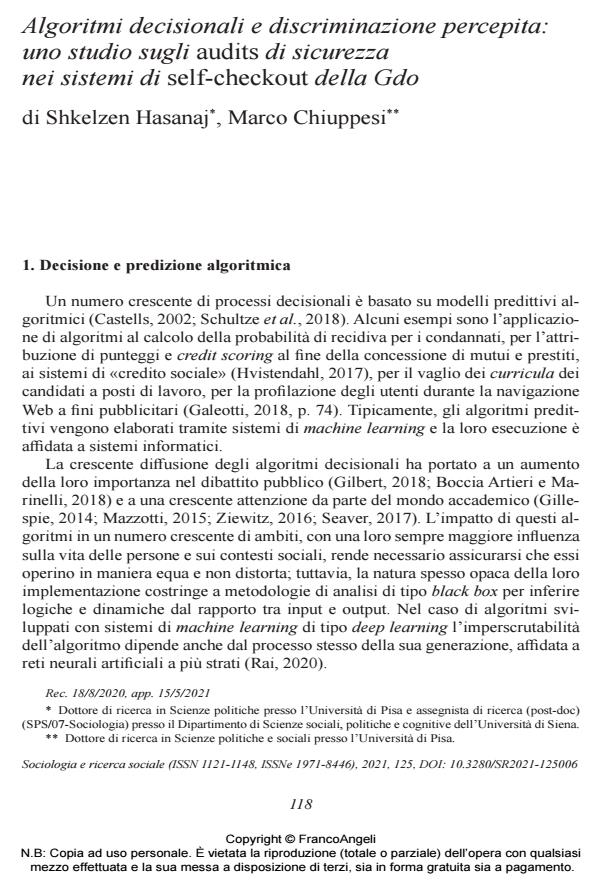Decision algorithms and perceived discrimination: a study on retail self-checkout audits
Journal title SOCIOLOGIA E RICERCA SOCIALE
Author/s Shkelzen Hasanaj, Marco Chiuppesi
Publishing Year 2021 Issue 2021/125 Language Italian
Pages 20 P. 118-137 File size 421 KB
DOI 10.3280/SR2021-125006
DOI is like a bar code for intellectual property: to have more infomation
click here
Below, you can see the article first page
If you want to buy this article in PDF format, you can do it, following the instructions to buy download credits

FrancoAngeli is member of Publishers International Linking Association, Inc (PILA), a not-for-profit association which run the CrossRef service enabling links to and from online scholarly content.
The increasing diffusion in many important sectors of algorithmic decision systems, often generated by machine learning, has led to the study of the possible biases that may be introduced in the various phases of creation implementation and use of these algorithms. The possibility of discriminatory biases, whose identification is made difficult by the often opaque nature of algorithms, preventing a direct analysis of their internal logic, appears especially relevant. After an introductory overview of predictive and decisional algorithms and the different types of algorithmic bias, some recent cases of algorithmic discrimination will be described. Then we will present a field study, conducted in the city of Pisa in November 2019, about the perception by foreign customers of discrimination in self-scan and self-checkout security audits in supermarkets. The study showed how algorithmic discrimination is not felt strongly as an issue by foreign respondents, even when faced with the possibility of discriminatory profiling and with a low satisfaction about self-checkout systems.
Shkelzen Hasanaj, Marco Chiuppesi, Algoritmi decisionali e discriminazione percepita: uno studio sugli audits di sicurezza nei sistemi di self-checkout della Gdo in "SOCIOLOGIA E RICERCA SOCIALE " 125/2021, pp 118-137, DOI: 10.3280/SR2021-125006